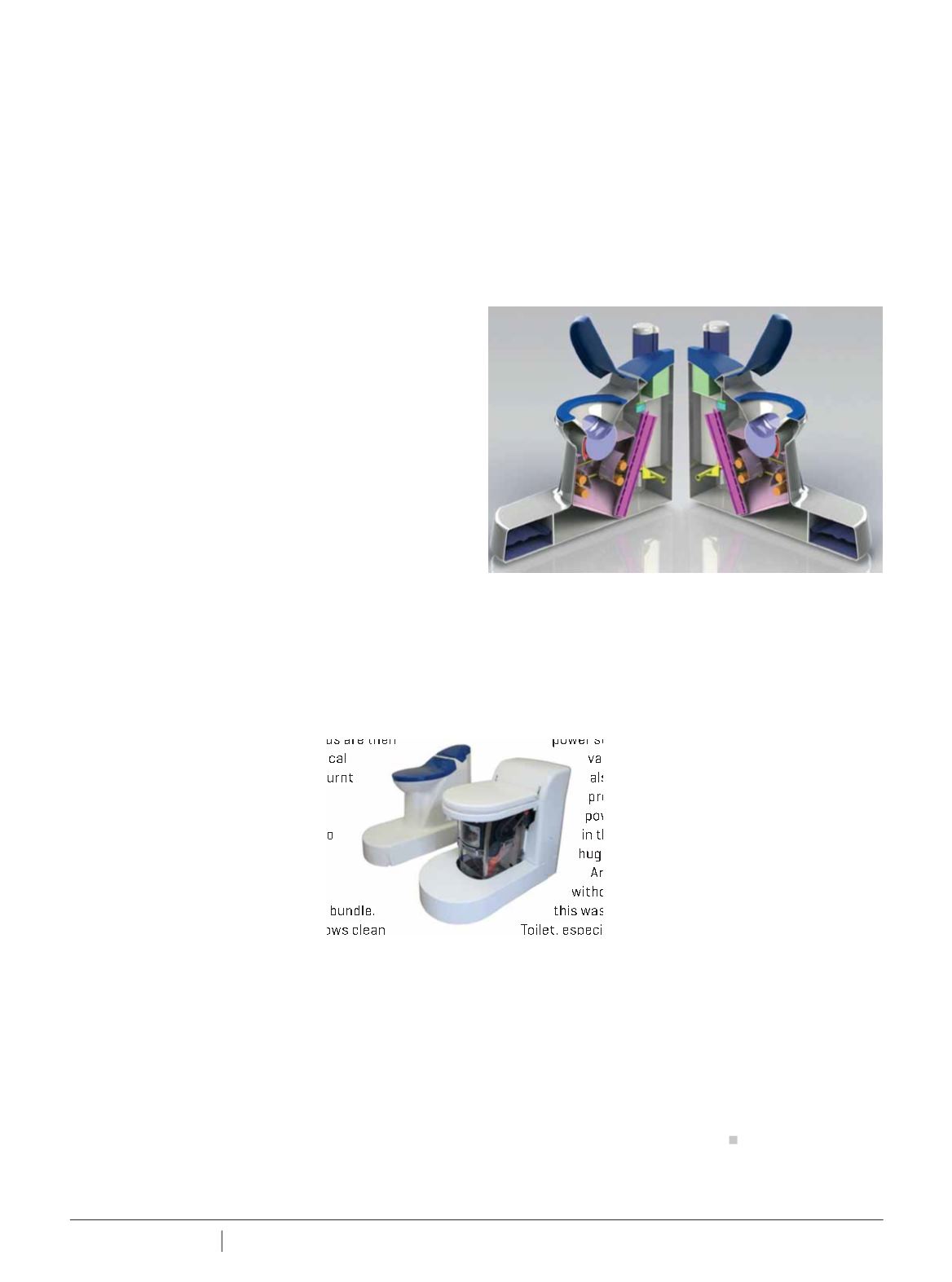

4 8
PLUMBING CONNECTION Summer 2017
WATERLESS TOILET
(NOT) MAKING A SPLASH
T
oday, under half the world’s population are without
access to sanitation. For this very reason, Cranfield
University is developing the Nano Membrane Toilet
which processes human waste without the need of energy or
water – basically, the waterless toilet.
The prototype works just like a normal toilet where
it accepts urine and faeces as a mixture but has added
mechanisms to treat the waste onsite instead of carrying the
waste to a sewage treatment plant. The ingenious creation has
slowly made waves across the plumbing industry, especially
with funding from the Bill and Melinda Gates Foundation.
The toilet and its clever design speak for itself. Cranfield
University lecturer Dr. Alison Parker says that on the surface it
looks like a normal toilet, but a plethora of features enable the
Nano Membrane to stand out and be the innovation the world
needs.
“For the user, it’s just like a normal toilet – it accepts urine
and faeces as a mixture then you just flush it and off you go.
Then clever stuff happens,” says Alison.
“A rotating mechanism drops the waste into a holding
tank while simultaneously blocking odour and the user’s view
of the waste. The solids settle to the bottom of the tank,
while the liquids float on the top. The solids are then
transported out of the tank by a mechanical
screw into a combustor where they are burnt
and transformed into ash.
“Later, the heat generated can be
converted into electricity which is used to
power toilet operations and any residual
energy is used for charging low voltage
items. The liquids pass over a weir in the
holding chamber and into the membrane bundle.
The unique nanostructure membrane allows clean
water to be extracted from the waste which can be used
in the household for whatever the user pleases.”
The first thing that runs through the minds of many people
who hear this being explained is ‘what about the smell?’
Luckily this was thought about in depth by the Cranfield
University creators and is solved by the toilet’s rotating
mechanism which blocks odours once the toilet is flushed. In
conjunction with Cranfield’s Centre for Competitive Creative
Design, the rotating mechanism was designed to wipe clean
the surface and trap odours by maintaining a constant barrier
to the waste.
Alison notes the simplicity of the installation process
and the minimal maintenance required,are two of the many
advantages that the waterless toilet brings to the industry.
“As no plumbing is required, the installation process is
simple – the toilet just needs to be transported to the home.
Some maintenance is required every three months to clean
the membranes,” says Alison.
“Other major advantages include the fact that the toilet
requires no water or external power to operate which removes
the entire need for plumbing, a sewage system or an electrical
power supply. This will prove to be even more
valuable with water scarcity rising and will
also reduce water bills. Additionally, it actually
produces fresh water and a small amount of
power and while this may seem small to most,
in the poorest areas of the world it can make a
huge difference.”
Around 2.5 billion people around the world are
without access to sanitation today. Ultimately,
this was the inspiration behind the Nano Membrane
Toilet, especially with millions of girls and women being
forced outside – often risking their lives and health – in
unsanitary conditions. Moreover, approximately 494 million
people use shared external toilets and every day two million
tonnes of human waste is disposed in water courses.
The combination of knowledge and expertise in water,
membrane technology, design and energy were used to
produce a household toilet that can transform human waste
into useful resources.
“At the end of the day, a household toilet offers convenience,
dignity and security, especially for vulnerable groups like
women, the disabled and the elderly.”
Alarming statistics for sanitation accessibility around the world have prompted the development of the
‘waterless toilet’.
Simeon Barut
explains the ins and outs of the innovation.
Cranfield University
www.cranfield.ac.ukSANITATION
















